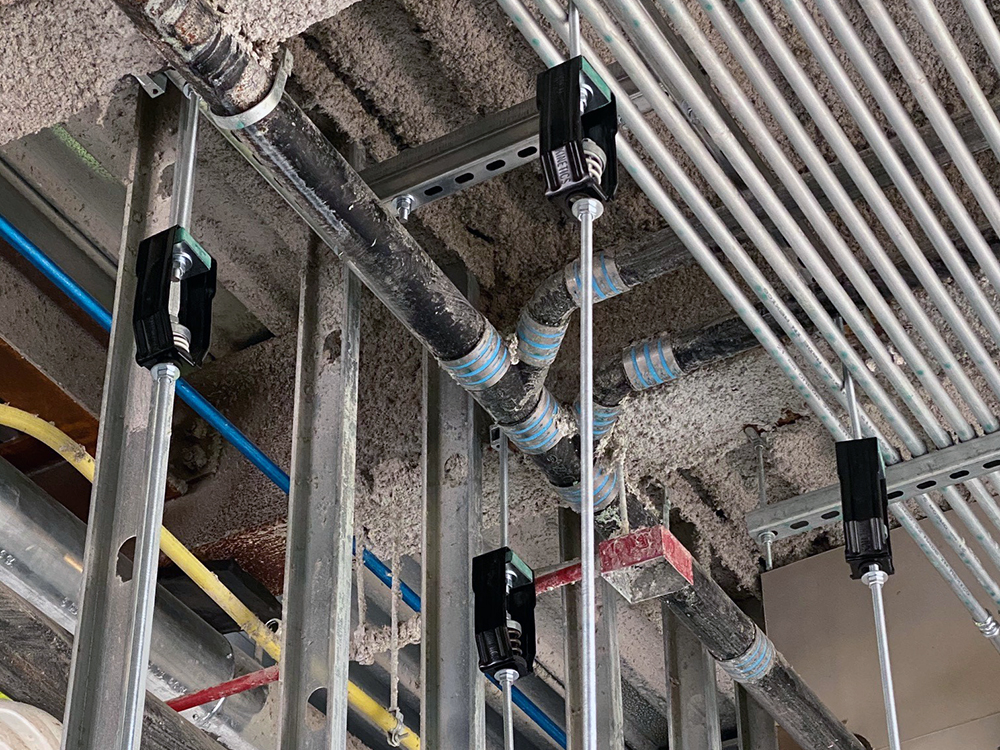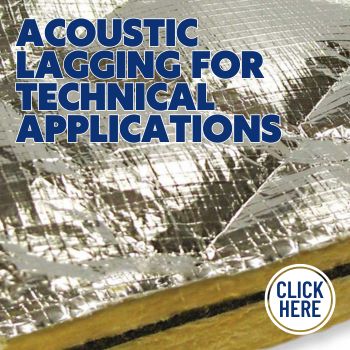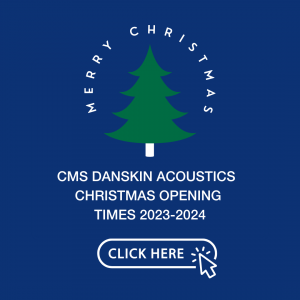Vibration isolators for suspended equipment with minimum static deflection requirement exceeding .4″ (10 mm), and where both high and low frequency vibration is to be isolated, shall be hangers consisting of a laterally stable steel spring in series with a precompressed molded fiberglass insert, complete with a load plate and assembled in a stamped or welded steel bracket.
The bracket shall be finished with an polyester powder coating. The manufacturer shall provide independent laboratory testing showing that the bracket with this finish has endured a minimum of 1,000 hours of exposure to salt spray fog testing per ASTM B117 without signs of corrosion.
The fiberglass insert shall be individually coated with a flexible, moisture-impervious elastomeric membrane. The insert shall be molded from glass fibers with fiber diameters not exceeding .00027″ (6.8 microns) and with a modulus of elasticity of 10.5 million PSI (738,223 kg/cm2).
Natural frequency of fiberglass vibration isolators shall be essentially constant for the operating load range of the supported equipment.
The spring element shall have a minimum lateral stiffness of 1.0 times the rated vertical stiffness.
Vibration isolators shall be color coded or otherwise identified to indicate load capacity.
The hanger bracket shall be designed to carry a 500% overload without failure and to allow support rod misalignment through a 30° arc without metal-to-metal contact or other short circuit.
The 1″ and 2″ hanger brackets shall incorporate spring caps with indexed steps which correspond to the washer diameter of appropriately sized hanger rod to keep the rod centered in the spring cap and reduce rod misalignment. The spring caps are protected under U.S. patent number 5,653,426.
Isolation hangers shall be selected by the manufacturer for each specific application to comply with deflection requirements as shown on the Vibration Isolation Schedule or as indicated on the project documents.
The combination isolation hanger assembly with fiberglass insert shall be Model SFH, as manufactured by Kinetics Noise Control, Inc.



